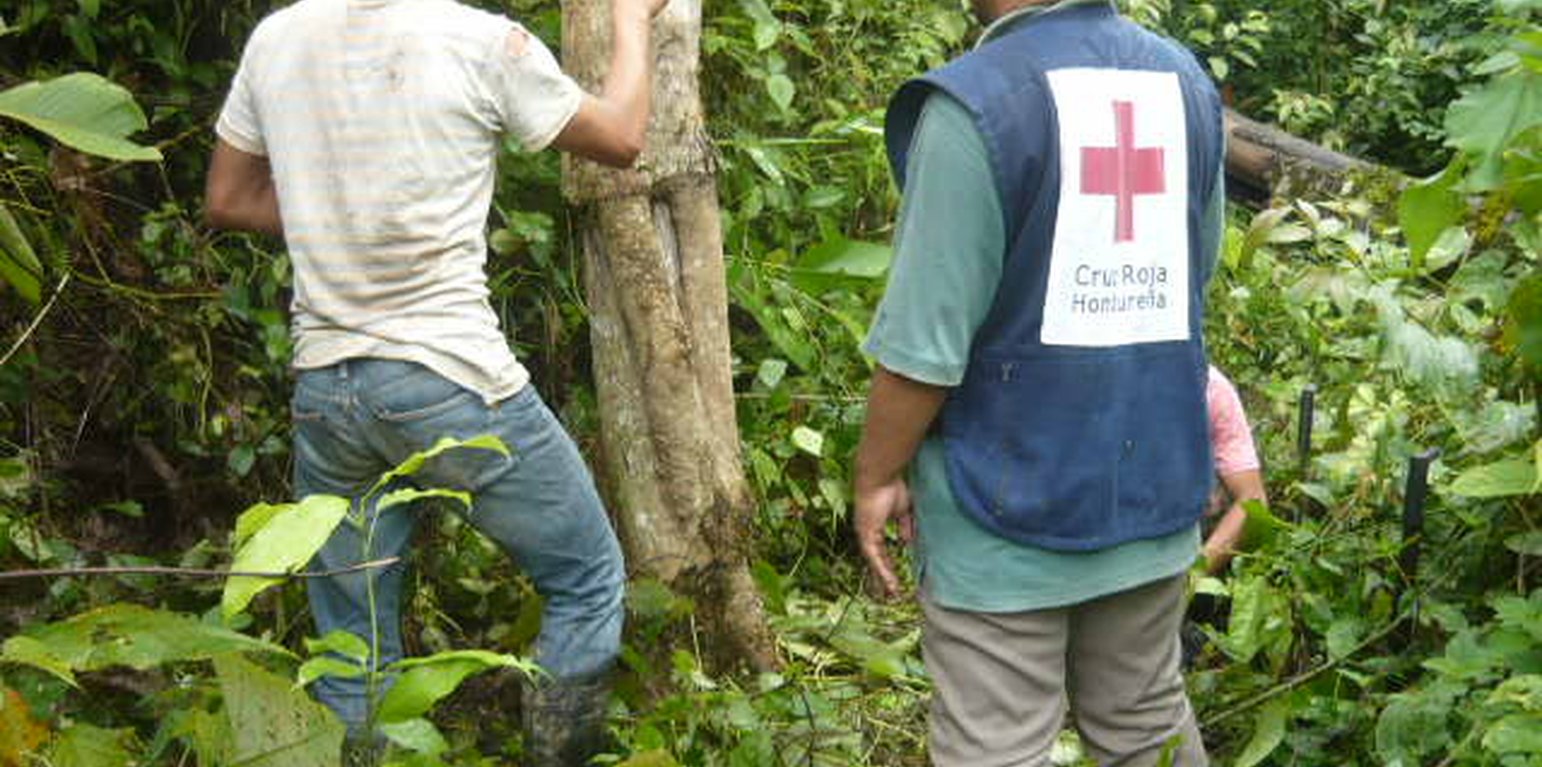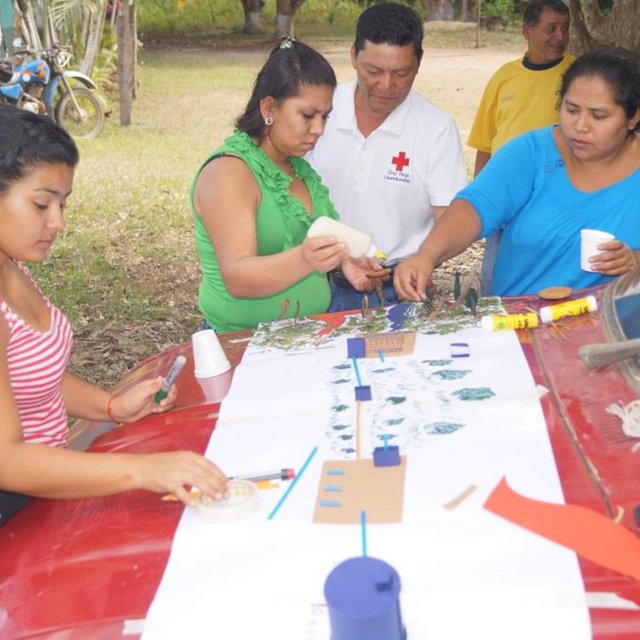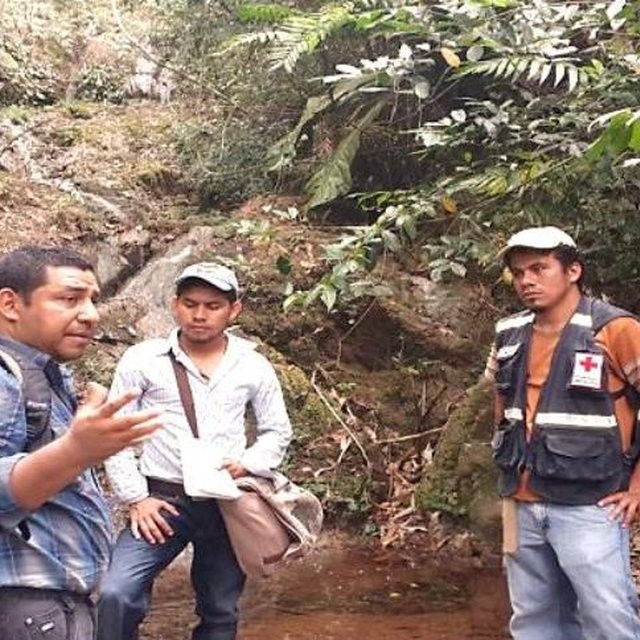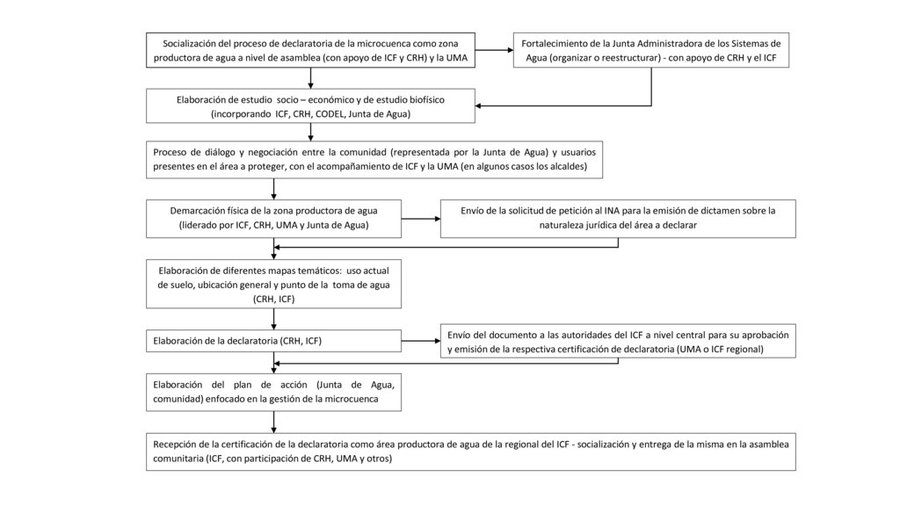



One of the main obstacles faced by communities in the Department of Olancho, Honduras, is access to water systems providing water in the required quantities and quality. In recent years, inadequate use of these microbasins has increased erosion in these regions. Changes in land use resulting in transforming forest lands into lands for agricultural and livestock production affect the cycle for recharging water. Furthermore, the pollution caused by agrochemicals and waste water derived from coffee processing reduces water quality and damages the health of the area's population
Honduran forest legislation establishes strict protections for microbasins exploited for human consumption. However, enforcing these laws frequently causes conflicts. The “Resiliencia” project headed by the Honduran / Swiss Red Cross, together with competent authorities, supports issuing decrees in order to protect microbasins; this is based on sensitization, raising awareness and providing training to the general population, specifically at the Water Management Boards, Local Emergency Committees (CODEL) and Health Committees. Local structures led by Water Management Boards are the main actors in this process and participate in community assemblies, surveys, delimitation of microbasins, collection of documents and negotiation with users, etc.
During the negotiation process, many Water Management Boards have carried out diverse fund-raising activities to compensate those users who give up the land plots they use in the microbasin. The Forest Conservation Institute (in Spanish, Instituto de Conservación Forestal, ICF) and the Environmental Municipal Unit (In Spanish, Unidad Municipal Ambiental, UMA) as well as the Red Cross, help to collect data, to define the area that will come under protection, to draft theme maps, to consolidate information required for clearance by the National Agrarian Institute (in Spanish, Nacional Agrario, INA). This also facilitates negotiations and agreements with people exploiting the aforementioned areas. The process required to issue a decree increases the community's sense of property, as well as ensures protection and conservation of microbasins and comprehensive water management systems. The nucleus of the approach involves strengthening Water Management Boards to help them manage their own water system through training in environmental issues, management and fee estimation, as well as providing them with tools to improve their water provision system. Thus, Water Management Boards become key players in protecting microbasins.

Location: Dulce Nombre de Culmí, San Esteban and Catacamas municipalities, Olancho, Honduras
Initiation date: 2011
Year of termination: n.a.
Type of Approach

| What stakeholders / implementing bodies were involved in the Approach? | Specify stakeholders | Describe roles of stakeholders |
| community-based organizations | Water Management Committees Local Emergency Committees (Comités de Emergencia Local, CODEL) Health Committees | Leadership for the process required to issue decrees to protect microbasins Implementing reforestation activities and microbasin protection Follow-up efforts to ensure water quality |
| NGO | Honduran/ Swiss Red Cross | Sensitize, raise awareness, train, facilitate negotiations support data collection efforts and follow-up activities focused on the process, technical and material support to implement SLM technologies |
| local government | Institute for the Conservation of Forests (Instituto de Conservación Forestal, ICF regional) Municipal Environmental Units (Unidades Municipales Ambientales, UMA | ICF: Facilitate negotiations, support data collection efforts and follow up activities, submit the Decree UMA: Disseminate the process, facilitate negotiations, provide support in delimitation |
| national government (planners, decision-makers) | Institute for Forest Conservation (Instituto de Conservación Forestal, ICF nacional) National Agrarian Institute (Instituto Nacional Agrario, INA) | ICF: Approve and issue corresponding certification for protection decree INA: Ruling on legal nature of the area addressed in the decree (proof of land property) |
Abbreviations:
CRH - Honduran Red Cross
ICF - Institute for Forest Conservation (Instituto de Conservación Forestal)
CODEL - Local Emergency Committee (Comité de Emergencia Local)
INA - National Agrarian Institute (Instituto Nacional Agrario )
UMA - Municipal Environmental Unit (Unidad Municipal del Ambiente )

Decisions were taken by
Decisions were made based on
Comprehensive Water System Management: Management, fee estimation, risk management, reforestation, water cycle, water treatment, drafting of action plans, developing requests for microprojects
Biophysical studies of the microbasin and socioeconomic studies of the microbasin performed by CRH, ICF, UMA, with participation from local institutions.
The approach particularly empowered the Water Management Boards and linked them with relevant government entities and institutions, thus improving stakeholder involvement.
The approach set the bases on which trained community institutions were able to implement and maintain SLM technologies.
Part of the approach involves training on fund management and applying to financial resources for developing microprojects.
Water Management Boards and Local Emergency Committees (CODEL) significantly increased their knowledge and capacities and, to a certain degree, are able to implement SLM independently. However, technologies such as reforestation or upgrading the water tank involves specific knowledge requiring technical support.
The approach strengthened community institutions, specifically Water Management Boards and cooperation among involved stakeholders and institutions.
Evicting land users settled in the microbasin can potentially lead to many conflicts. The approach emphatizes dialogue among communities and land users in the microbasins to reach common agreements on the protection of these lands.
The approach includes training on environmental issues in schools and involves students and teachers to implement SLM Technologies, such as reforestation.
The approach enabled enacting Honduran Legislation to provide strict protection to microbasins, by reaching an agreement with users who hindered the implementation of SLM Technologies.
Some water sources that had been dry for years are showing increased levels of water
Some communities relying on the approach managed to increase the amount of water available and have started microprojects involving fish farming and installation of micro-irrigation systems.
Strict protection of microbasins and improvement of water infrastructure reduced the contamination of water sources, thus reducing the incidence of diarrhea in the communities